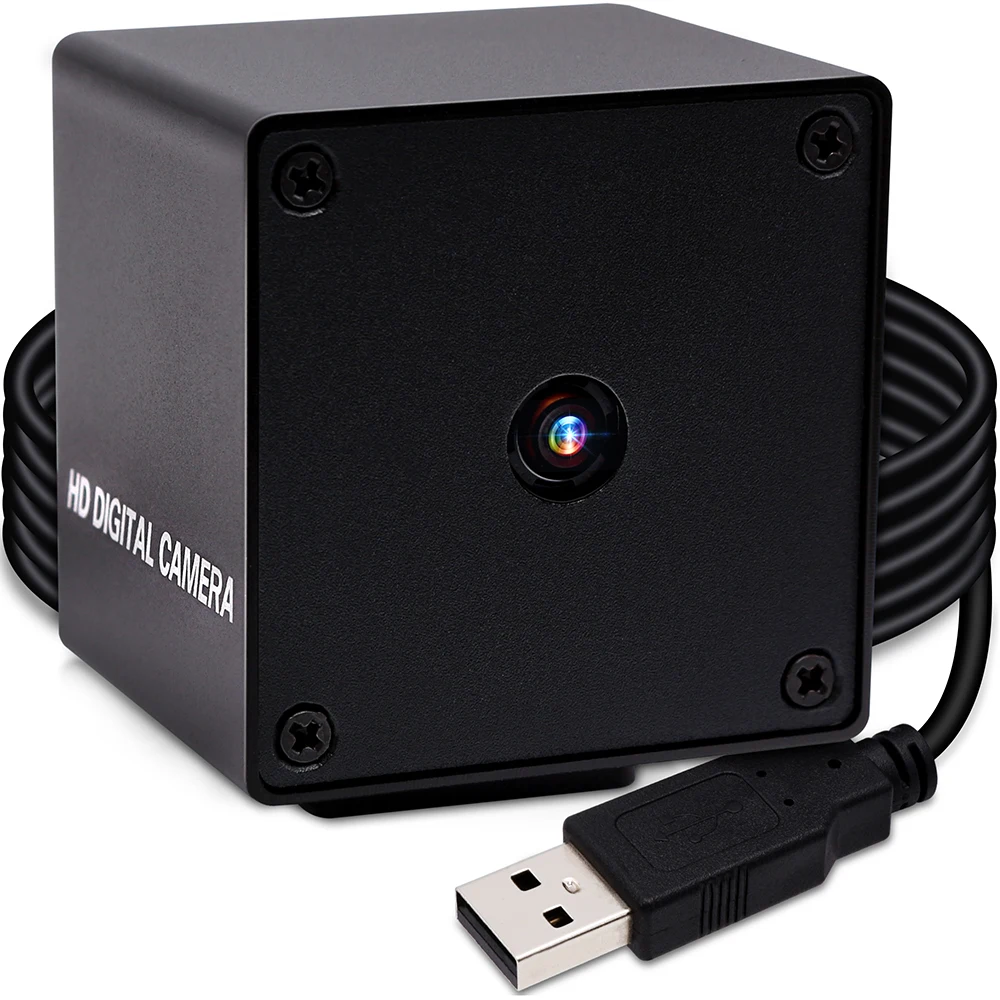In an age where high-definition visual data is key across industries — from machine vision and AI imaging to medical devices and smart retail — choosing the right camera solution is only half the battle. Knowing how to set up and optimize your high-resolution USB camera, especially one as powerful as a 48MP sensor, ensures you get the most out of your investment.
At Shenzhen Ailipu Technology Co., Ltd., a professional manufacturer of USB cameras, we bring you a complete guide based on real-world integration experience. Our in-house brand ELP is a name trusted across both domestic and global camera markets, known for delivering precision, clarity, and long-term reliability.
In this article, we'll walk you through everything you need to successfully deploy and fine-tune a 48MP USB camera — from hardware setup to image quality enhancement and application-specific configurations.
Step 1: Unbox and Inspect the Camera Package
When you receive your ELP 48MP USB camera, start by checking that everything is included:
48MP USB camera module
USB 2.0 or 3.0 cable (based on model)
Optional: lens (C/CS-mount), tripod mount, mounting bracket, or driver disc
Product manual or QR code for online resources
Shenzhen Ailipu tests all products before shipping, but always inspect for shipping damage or missing accessories.

Step 2: Connect the Camera to Your PC
Use the included USB cable to connect the camera to a Windows, Linux, or Android system. Most ELP USB cameras are UVC-compliant, meaning they are plug-and-play with no driver required for modern operating systems.
For best results:
Use a USB 3.0 port for faster data transfer and full-frame rate support.
Avoid USB hubs or extenders unless they are externally powered.
Confirm device detection under Device Manager (Windows) or lsusb (Linux).
For advanced features, Ailipu offers SDKs and driver downloads via the official ELP website.
Step 3: Select and Install a Viewer or Software Platform
To preview and adjust camera output, install a compatible viewer:
Windows: AMCap, SharpCap, or custom ELP Viewer
Linux: Cheese, GUVCView, OpenCV integration
Cross-platform: OBS Studio, VLC Media Player, or third-party vision software
Developers working in OpenCV, Python, or MATLAB can also access ELP cameras via UVC standards and standard camera interfaces.
ELP provides sample code and API documentation to help engineers integrate with industrial vision systems.

Step 4: Optimize Image Settings for Your Application
48MP cameras offer ultra-high resolution, but proper tuning is key. Start by adjusting these core parameters:
Resolution and Frame Rate
Choose a balance between resolution and frame rate — full 48MP output may have lower fps.
For real-time monitoring, use reduced resolution (e.g., 8MP or 12MP).
For still image capture, enable full 48MP mode for maximum clarity.
Focus and Lens Adjustment
Manually focus your lens (if using C/CS-mount optics).
Set working distance and field of view according to your target object.
Use auto-focus variants if rapid focal shifts are required.
Exposure and Gain
Reduce exposure time for moving objects to prevent blur.
Adjust gain to brighten image in low-light conditions — but avoid overexposure.
Use auto-exposure modes for dynamic scenes.
White Balance and Color Settings
Set manual white balance under consistent lighting conditions for accurate color reproduction.
Enable auto white balance when ambient lighting changes frequently.
ELP cameras are built with low-noise CMOS sensors, enabling high-dynamic range performance even in challenging environments.
Step 5: Integrate with Your Application
Shenzhen Ailipu’s USB cameras are deployed across diverse industries:
Machine Vision and Inspection
Integrate with conveyor-based systems
Use ROI (region of interest) selection to isolate inspection zones
Sync camera trigger with PLC or sensor inputs (GPIO control)
Facial Recognition and AI Imaging
Pair with neural network software for high-resolution face detection
Use low-distortion lenses for accurate data capture
Medical Imaging and Laboratory Applications
Connect to microscopes or diagnostic tools
Calibrate color accuracy for precise sample representation
Retail and Embedded Systems
Integrate with smart shelves, kiosks, and people-counting systems
Compact form factor fits easily into tight system enclosures
With broad compatibility and customizable firmware, ELP USB cameras are engineered to support both prototyping and mass deployment.

Step 6: Troubleshooting & Performance Tips
Lagging Video Feed? Use USB 3.0 port and reduce resolution/fps.
Image Artifacts? Check for lens dust, improper focus, or software settings.
Not Detected? Try another cable, switch USB ports, or test on a different device.
Flickering Under Light? Adjust anti-flicker settings (50Hz/60Hz) in software.
For technical support, Shenzhen Ailipu offers responsive customer service and detailed setup documents via email or online portal.
Why Choose ELP Cameras from Shenzhen Ailipu Technology Co., Ltd.?
With years of experience in the USB camera manufacturing field, Shenzhen Ailipu is known for:
In-house R&D and mechanical design capabilities
Strong reputation under the ELP brand in both domestic and international markets
Wide portfolio including USB 2.0/3.0, 4K, 8MP, and 48MP modules
Support for OEM/ODM customization for specific customer projects
Stable production and strict quality control standards
Whether you're a system integrator, hardware developer, or research institution, ELP cameras deliver consistent performance with industrial-grade reliability.

Conclusion
Setting up a 48MP USB camera doesn't have to be complicated — especially when you work with a professional manufacturer like Shenzhen Ailipu Technology Co., Ltd.. By following the right steps in installation, calibration, and software integration, you'll unlock the full potential of your high-resolution imaging device.
Whether your goal is accurate AI data, sharp visual inspection, or enhanced laboratory imaging, ELP USB cameras offer the flexibility and clarity needed in today’s vision-driven world.
Troubleshooting Common Issues with 48MP USB Cameras: Tips and Solutions
www.camerasboard.com
Shenzhen Ailipu Technology Co.,Ltd